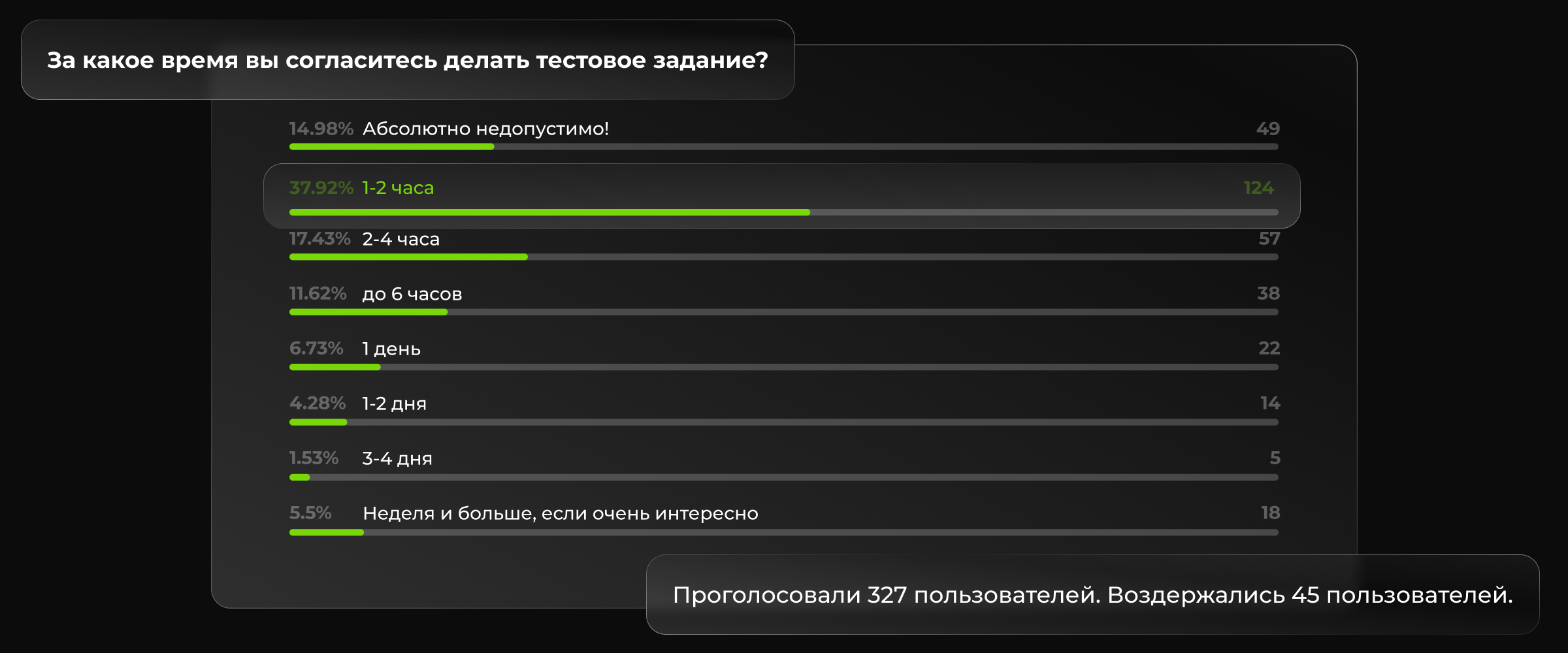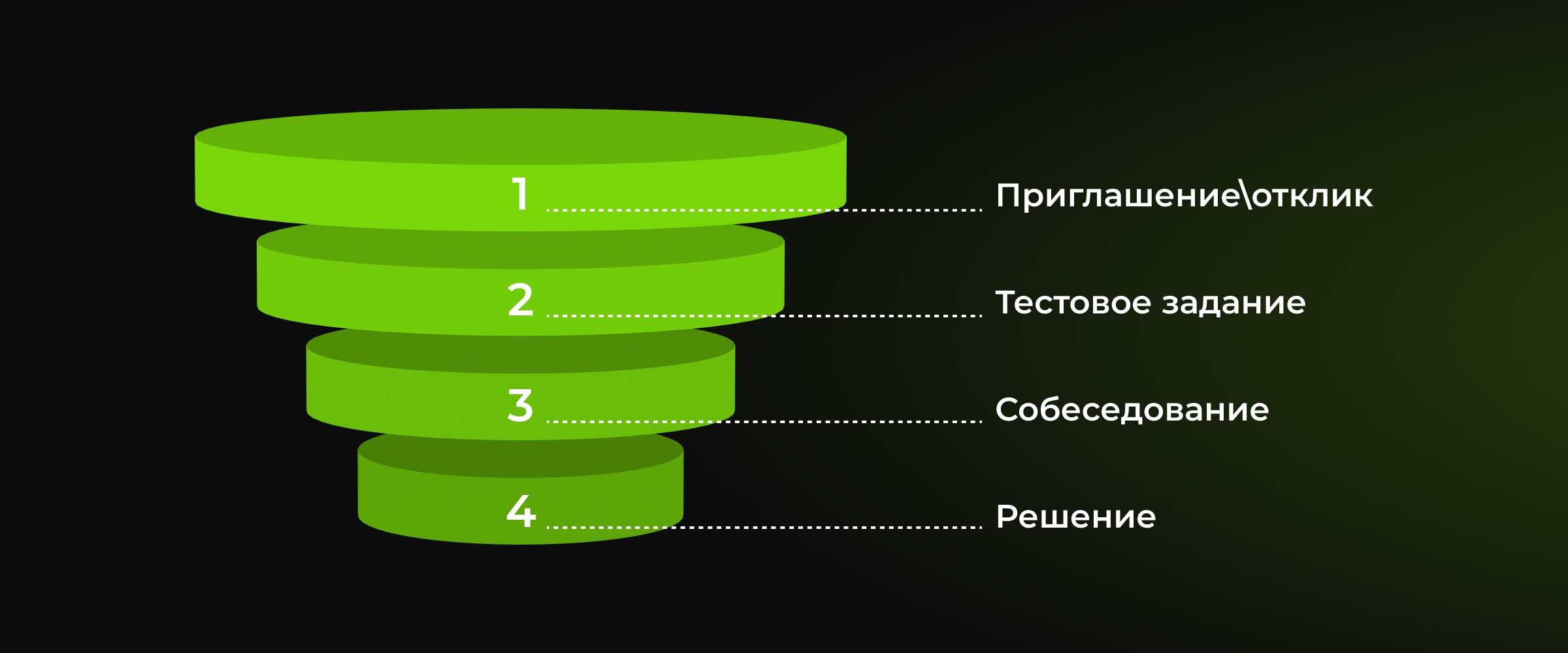Job application test tasks are one of the most controversial selection tools, evoking conflicting emotions from both applicants and employers. Through this tool, a company identifies motivated and suitable employees, but it can also deter experienced professionals. During the evaluation, candidates either gain a better understanding of the team's activities or become confused about expectations.
As a result, using a test task in the recruiting funnel can lead to either productive collaboration or a waste of time. The latter outcome often generates strong negative reactions and criticism towards this method of skill assessment. However, we believe that the issue lies not in the method itself but in how it is implemented.
Test Task Preparation

Approach test task development seriously. There's no point in googling spatial formulations online and including tasks that are unrelated to the company's realities. If you find yourself in need of a new specialist, it's better to write a detailed list of what you expect from them in the job posting. For example, a copywriter, SMM, and SEO specialist are different positions that employers often mistakenly consider to be the same.
Choose the most significant requirements from the compiled candidate profile and prepare tasks based on them, closely resembling real-world challenges but not exceeding 3 hours. Even if you're ready to pay for successfully completed work, not every experienced professional will take on a lengthy task with possible compensation. Moreover, you're unlikely to pay for every submitted version.

When you lack the necessary knowledge to develop a practical test task, consider reaching out to a company that already has employees you find interesting. It's unlikely that they will agree to help for free, but this investment justifies itself by significantly reducing the hiring process. You'll get a tool that won't deter applicants but will demonstrate the organization's competence.
Key Requirements for a Test Task
- Adequate Deadline and Scope: Set a deadline and scope that doesn't take up too much time but provides insight into the candidate's skills. Remember, you understand how the company operates, but candidates often have to familiarize themselves with its processes before tackling the task.
- Clarity and Correctness in Task Descriptions: Have your colleagues review the task description and clarify any misunderstandings. Inform the candidate that you're ready to answer their questions if the task's wording is unclear.
- Transparency: Explain why the test task is given and how it will be used.
- Feedback After Task Submission: Provide feedback, especially if the task is unpaid. Young professionals undertake interesting tasks not just to get a job but also to enhance their qualifications. Leave a positive impression by providing feedback with an analysis of the candidate's solutions. Recognize their effort.
When to Give a Test Task

The choice of when to give a test task depends directly on the brand's visibility and the company's activities. If there are over 100 candidates for a position and the work can be done by someone without experience, it's more logical to send a test task before the interview. Some candidates may be filtered out due to their unwillingness to complete it, while from the remaining pool, you can select professionals with stronger hard skills. After that, have a personal conversation and make a final decision.

When a company doesn't have a well-known brand and needs narrowly specialized professionals, it shouldn't conduct mass mailings. In this case, it's more important to thoroughly examine the candidate's previous work experience and portfolio. If there are no detailed case studies, you can request additional information and comments from the candidate. If the experience and skills align with the requirements, it's advisable to proceed to the interview, during which skill assessments can be included. Based on personal acquaintance, it's possible to make a decision about the future employee. If there are doubts, then offer a test task.
The structure of the recruitment funnel and the inclusion of additional checks should be tailored individually. The main thing is to know who the organization needs and what tasks they should be able to handle. Only after understanding these needs should the hiring process be structured with or without a test task. Otherwise, the company risks constant searches and negative feedback for taking applicants' time without reason.
Our practice involves how to give a test task

Over the 12 years that our agency has been in the IT market, we have tried various approaches to hiring specialists. Initially, candidates were generally positive about test tasks, but now everything has changed dramatically. This is normal considering the checks they have to go through when looking for a job:
- ambiguous wording or tasks that go beyond the job's functionality,
- lack of feedback,
- using completed work without payment.
For our company, giving a "homework" test task also involves risks and expenses. After all, we don't know if the candidate completed it themselves and if they will handle a similar task on a client project. Additionally, our managers spend their time developing new tests and analyzing their completion. Taking into account concerns from both sides, we decided to offer test tasks to individual specialists and use them as an additional tool.
For example, when hiring a project manager, we invite the candidate to the office for an interview and to demonstrate their skills in practice. One of the project manager's tasks is to prepare a cost estimate based on the client's functional requirements. To describe the tasks, we use closed cases from MediaTen, whose solutions we are familiar with. This task takes 5-7 hours to complete. After successfully passing the check, we pay for the work, including the trial day spent.
The selection process for developers varies. A confident Mid or Senior developer will not even consider a position that requires unpaid test tasks. However, there are Juniors who are overly confident, embellish their resumes, and apply for higher-level positions. In such cases, our task is to determine if the skills listed in the resume are real or not. We try to do this during a technical interview with the IT director present, including live coding and code reviews.

Live coding is a rapid method to determine how and within what timeframe a developer can handle a task close to real-world scenarios. It, along with analyzing someone else's code, provides insight into the candidate's thought process, stress tolerance, and flexibility. It's not a big issue if a specialist makes minor mistakes that they can correct based on the team lead's comments. However, absolute misunderstanding and confusion indicate the candidate's lack of relevance.
If after the technical interview, the manager has no doubts about the candidate's competence, we make an offer. If there are doubts, we suggest solving a test task that will determine the specialist's grade and lead to a final decision on further collaboration. The time spent on the test task is compensated similarly to the project task.
In our practice, the decision to hire is often made immediately after the technical interview. However, there are cases when candidates themselves realize that their skills may not match and want to complete a practical task to determine their grade. We accommodate candidates because the company's goal is to identify and invite those who are truly capable of growth and will become valuable specialists in the team.





